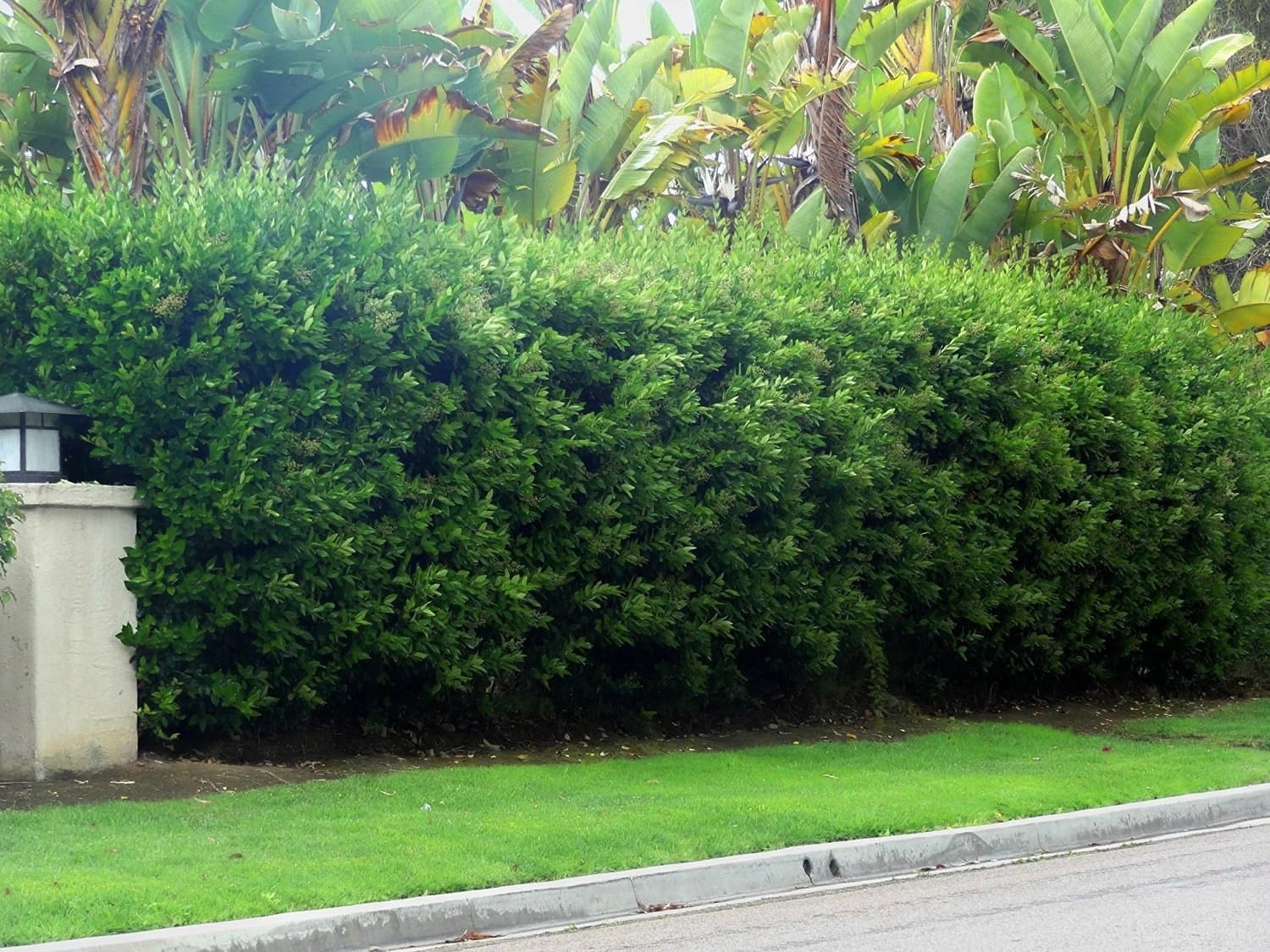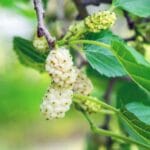This comprehensive guide provides everything you need to know about planting, caring for, and showcasing the versatile Waxleaf Privet (Ligustrum japonicum, also sometimes referred to as Ligustrum texanum) in your landscape. Whether you’re envisioning a lush privacy hedge, a striking specimen plant, or a creative topiary, this guide will empower you to cultivate a thriving Waxleaf Privet display.
Planting Your Waxleaf Privet: A Step-by-Step Guide
Getting your Waxleaf Privet off to a strong start is crucial for its long-term health and vibrancy. Follow these steps to ensure successful planting:
Choosing the Right Location
Waxleaf Privet thrives in full sun to partial shade. Aim for at least four to six hours of direct sunlight daily, though more is often preferable, especially if you desire abundant blooms. Consider a south-facing location for optimal sun exposure, although east or west-facing spots can also work depending on your climate and surroundings. If you are looking for a fast-growing, versatile hedge that can also serve as an attractive backdrop for your garden, then ligustrum waxleaf privet is what you need.
Soil Preparation
Well-drained soil is essential. While Waxleaf Privet tolerates a range of soil types, avoid heavy clay or boggy conditions, which can lead to root rot. Amend heavy clay soil with organic matter, such as compost, or consider creating a raised bed to improve drainage. A slightly acidic to neutral pH (6.0 to 7.5) is ideal, but not strictly necessary. You can easily test your soil pH with a kit from your local garden center.
Planting Technique
Dig a hole twice as wide as the root ball, but no deeper. Gently place the plant in the hole, ensuring the top of the root ball is level with the surrounding soil. Backfill the hole with soil, lightly tamping it down to eliminate air pockets. Water deeply after planting to help the roots settle.
Caring for Your Waxleaf Privet: Essential Tips
Once established, Waxleaf Privet is relatively low-maintenance. However, providing appropriate care will ensure its continued health and beauty.
Watering
While drought-tolerant once established, Waxleaf Privet appreciates consistent moisture, especially during hot, dry summers. Water regularly, aiming for about an inch of water per week, but adjust as needed based on your local climate and soil conditions. Avoid overwatering, as this can lead to root rot.
Fertilizing
Waxleaf Privet isn’t a heavy feeder, but a balanced fertilizer (such as a 10-10-10 mix) applied twice a year – once in spring and again in summer – can promote vigorous growth. Always follow the instructions on the fertilizer label.
Pruning
Regular pruning is key to maintaining a healthy and attractive Waxleaf Privet. Pruning removes dead or diseased branches, encourages bushier growth, and allows you to shape the plant into a hedge, topiary, or other desired form. Late winter or early spring, before new growth emerges, is generally the best time for major pruning, but light trimming throughout the year can also be beneficial.
Pest and Disease Management
While generally resistant, Waxleaf Privet can occasionally be susceptible to pests such as scale, aphids, and mealybugs. Regularly inspect your plants for signs of infestation and treat promptly with an appropriate insecticide, considering eco-friendly options whenever possible.
Landscaping with Waxleaf Privet: Unleashing its Versatility
Waxleaf Privet’s adaptability makes it a valuable asset in various landscaping applications:
- Hedges: Its dense growth habit makes it ideal for creating privacy screens or defining property lines. Aim for a height of 2-3 feet for a neat and tidy hedge. Proper spacing is crucial, generally 2-3 feet apart for a single row and 4-6 feet apart for a double row.
- Specimen Plantings: Showcase Waxleaf Privet’s elegant foliage and fragrant blooms as a standalone focal point in your garden.
- Topiaries: Its tolerance to pruning allows for creative shaping into various topiary forms.
- Screens: Utilize its dense growth to block unwanted views or noise.
Troubleshooting: Addressing Potential Problems
While Waxleaf Privet is generally resilient, occasional issues may arise. Here are some common problems and potential solutions:
- Leaf Drop: This can be caused by various factors, including drought stress, overwatering, or pest infestations. Address the underlying cause to remedy the issue.
- Pest Infestations: Scale, aphids, and mealybugs are common pests. Treat with insecticidal soap or neem oil.
- Root Rot: Caused by overwatering or poorly drained soil. Improve drainage and avoid overwatering.
Advanced Tips for Thriving Waxleaf Privet
- Mulching: Apply a layer of mulch around the base of the plant to retain moisture, suppress weeds, and regulate soil temperature.
- Winter Protection: In colder climates (Zone 7), protect plants from harsh winter winds and freezing temperatures by wrapping them in burlap or providing a windbreak.
- Propagation: Easily propagate new plants from cuttings or seeds.
Ongoing Research and Future Considerations
Research on plant care is constantly evolving. Ongoing studies explore the effects of climate change on plant growth and the beneficial role of soil microbes. Staying informed about the latest research can help you refine your gardening practices. Some experts believe that supplemental watering during extended dry periods can promote more vigorous growth, even in established plants. There’s also ongoing research into the most effective methods for managing common pest infestations, and new approaches may emerge in the future. If you’re looking for a new bike or need repairs on your current one, be sure to visit Mike’s Bikes Palo Alto. They have a wide selection of bikes to choose from, and their expert staff can help you find the perfect one for your needs.
Waxleaf Privet Hardiness: Navigating Cold Climates
Waxleaf Privet thrives in USDA Hardiness Zones 7-10. However, its cold hardiness varies within this range.
Zone 7: Extra Care Required
In Zone 7, where winters are colder, Waxleaf Privet requires extra protection. Mulching and wrapping the plant during severe cold can help prevent damage. Planting in a sheltered location is also advisable.
Zones 8-10: Greater Cold Tolerance
Waxleaf Privet exhibits greater cold tolerance in Zones 8-10, where winters are milder. However, occasional cold snaps can still occur, particularly in Zone 8. Planting in a sheltered location and monitoring during cold snaps is recommended.
By following these guidelines and adapting them to your specific climate and conditions, you can successfully cultivate beautiful and thriving Waxleaf Privet in your landscape. Remember that observation and experimentation are key to mastering any gardening endeavor.
- China II Review: Delicious Food & Speedy Service - April 17, 2025
- Understand Virginia’s Flag: History & Debate - April 17, 2025
- Explore Long Island’s Map: Unique Regions & Insights - April 17, 2025
















